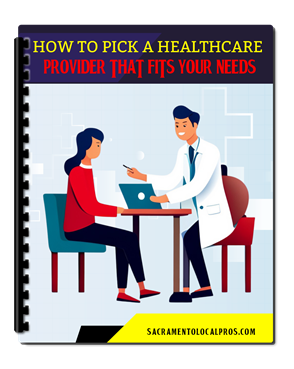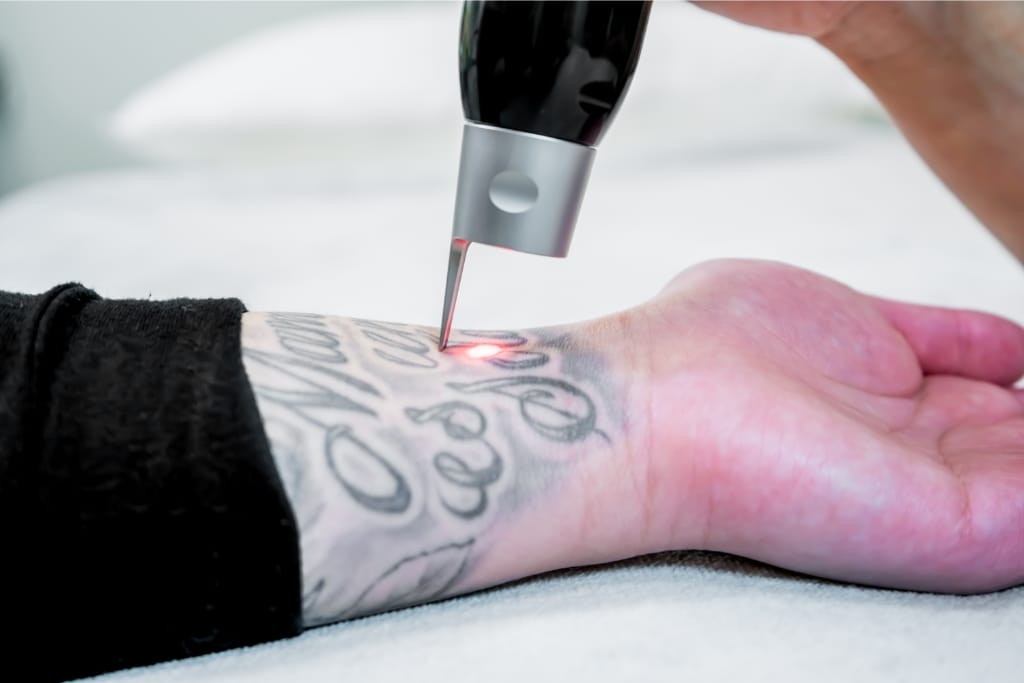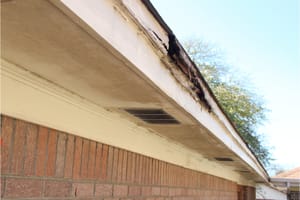Removing a tattoo can mark the start of a new chapter in life, whether you're making room for future ink or simply seeking to return your skin to its natural state.
It's essential to know that the process doesn't end once you've left the clinic; proper aftercare is crucial for effective healing and achieving the best results.
Understanding and following expert aftercare tips can make all the difference in your tattoo removal journey.
Ready to discover the secrets to smooth recovery and lasting skin health?
Let's dive in.
1)) Keep The Area Dry
Ensuring the treated area remains dry is vital for optimal healing after tattoo removal.
Moisture can become a breeding ground for bacteria, which may lead to infections and hinder the recovery process.
Avoid activities such as swimming, hot tubs, and long showers, as prolonged exposure to water can compromise the integrity of the healing skin.
When washing, use a gentle touch with a mild, fragrance-free soap and quickly pat the area dry with a clean, soft towel.
Refrain from applying creams, lotions, or ointments not specifically recommended by your specialist, as these can also trap moisture and cause irritation.
By diligently keeping the area dry, you significantly enhance the healing process and support clear, healthy skin.
2)) Apply Antibacterial Ointment
Using an antibacterial ointment is a crucial step in preventing infections and supporting your skin's natural healing process after tattoo removal.
After ensuring the area is clean and dry, gently apply a thin layer of the ointment to the treated site as advised by your specialist.
This creates a protective barrier against bacteria and helps to minimize irritation and redness.
Be sure to use only the ointment prescribed or recommended by your removal expert, as products with unfamiliar ingredients might lead to unwanted reactions or slow down recovery.
Consistently applying antibacterial ointment as part of your aftercare regimen will promote a safer healing environment and encourage your skin to return to its unblemished state.
3)) Avoid Direct Sunlight
Protecting the treated area from direct sunlight is critical in safeguarding the sensitive skin and enhancing the efficacy of the tattoo removal process.
Sun exposure can cause significant irritation to the healing skin, potentially leading to complications such as hyperpigmentation or scarring.
To prevent such issues, make it a priority to utilize protective measures like wearing clothing that covers the area or applying a broad-spectrum sunscreen with a minimum SPF of 30, approved by your specialist.
It is particularly important to remain vigilant during peak sunlight hours, typically between 10 a.m. and 4 p.m., when UV rays are at their strongest.
By diligently avoiding direct sunlight, you allow the removal site to heal optimally, ensuring the best possible outcome for your skin's appearance and health.
4)) Do Not Pick Or Scratch
Resisting the urge to pick or scratch the treated area is essential for successful tattoo removal and a smooth recovery.
As the skin heals, it is normal to experience itching or notice scabbing and crusting, but any attempt to remove these can lead to scarring, infection, or prolong the healing process.
Instead, allow the scabs to fall off naturally, as this indicates that the skin is repairing itself in a healthy manner.
To alleviate discomfort, try applying a cold compress or tapping the area gently, which can provide relief without causing damage.
By exercising patience and refraining from picking or scratching, you will support the skin's natural repair mechanisms, paving the way for a clearer and healthier final result.
5)) Stay Hydrated
Maintaining adequate hydration is vital for optimal skin health and the recovery process after tattoo removal.
Drinking enough water helps flush toxins from your body, supports cellular regeneration, and ensures that your skin remains supple and resilient.
It is advisable to consume at least eight 8-ounce glasses of water daily, though individual needs may vary depending on factors such as activity level and climate.
Incorporating water-rich foods like fruits and vegetables into your diet can further enhance hydration levels.
Dehydrated skin may become dry and itchy, potentially complicating the healing phase.
By prioritizing hydration, you provide your skin with the necessary resources to heal efficiently and achieve a smooth, clear appearance post-removal.
6)) Limit Physical Activity
Limiting physical activity is a vital component of the aftercare process following tattoo removal, as it aids in minimizing the risk of complications and ensures a smoother recovery.
Engaging in strenuous exercise can increase blood flow and body temperature, which may, in turn, exacerbate swelling, irritation, or bleeding at the treated site.
Activities such as weightlifting, running, or high-intensity workouts should be postponed until you receive clearance from your specialist.
Gentle movements like walking or stretching may be permissible, but always consider the advice of your removal expert.
By carefully managing your physical activity, you allow the area to heal without unnecessary stress, contributing to a successful removal process and a healthy, clear skin appearance.
7)) Follow Up On Appointments
Attending follow-up appointments is an indispensable part of the tattoo removal journey, helping to assess progress and make necessary adjustments to your treatment plan.
These appointments provide an opportunity for your specialist to evaluate how your skin is responding to the procedure, ensuring that it is healing properly without signs of adverse reactions.
Through monitoring the skin's progress, the specialist can determine if additional sessions are required or if any modifications are necessary to enhance the removal process.
Skipping these check-ins may delay your recovery or interfere with the efficacy of the treatment.
By committing to attend each follow-up appointment, you contribute actively to achieving the desired result and maintaining healthy skin throughout the removal process.
8)) Wear Loose Clothing
Opting for loose clothing after tattoo removal is a crucial step in promoting comfort and preventing irritation during the healing process.
Tight garments can rub against the treated area, exacerbating tenderness and increasing the risk of complications like blistering or scarring.
Soft, breathable fabrics such as cotton are ideal choices, as they minimize friction and allow air circulation, which can contribute to faster healing.
Loose clothing offers ample space for any bandages or dressings that may be necessary, ensuring that they stay securely in place without unnecessary strain on the skin.
By choosing attire that is gentle on sensitive skin, you create an optimal environment for recovery, allowing your skin to heal effectively and reducing the likelihood of additional discomfort or damage.
9)) Monitor For Signs Of Infection
Keeping a vigilant eye for signs of infection is a critical aspect of the tattoo removal aftercare process, aiding in swift detection and response to any complications that may arise.
Symptoms of infection can include redness that spreads beyond the treated area, an increase in pain or swelling, the emergence of pus or yellow fluid, and a fever or chills.
If any of these signs appear, it is essential to contact your healthcare provider or removal specialist immediately to seek professional advice.
Early intervention can prevent the progression of infection and protect your skin from further damage, ensuring a smoother recovery journey.
By actively monitoring for potential infections, you safeguard your skin's health and support an effective tattoo removal experience, achieving a safe and desired outcome.
10)) Maintain A Healthy Diet
Prioritizing a healthy diet is a fundamental element in bolstering your body’s healing capabilities during the tattoo removal process.
Consuming nutrient-rich foods provides your body with essential vitamins and minerals that support cellular repair and regeneration, critical for skin recovery.
Incorporating antioxidant-laden fruits and vegetables, lean proteins, and healthy fats can enhance your immune system's efficiency, promoting quicker tissue repair and reducing inflammation.
Staying mindful of your dietary choices not only aids in detoxifying your body but also ensures that your skin remains resilient and better equipped to recover from the procedure.
By maintaining a balanced diet, you nurture your overall health, creating a foundation for your skin to heal proficiently, contributing to a successful tattoo removal and achieving your desired appearance.
Conclusion
The tattoo removal journey requires dedication and attentiveness to ensure a safe and successful outcome.
By conscientiously managing physical activity, attending follow-up appointments, wearing loose clothing, monitoring for infections, and maintaining a healthy diet, individuals can significantly enhance their skin’s healing capabilities and overall well-being.
Each step in the aftercare process plays a pivotal role in ensuring not only efficient removal but also the long-term health of your skin.
Engaging with these practices embodies mindful self-care, paving the way for restored, healthy skin and helping achieve a new, desired appearance with confidence.
Download Our Free E-book!








